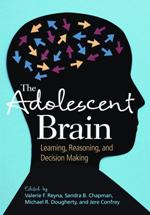
Such behavior problems in adolescence as aggression and delinquency are linked to chronic stress in early childhood, which interferes with children's development of self-control, reports a Cornell study published online in April in Developmental Psychology.
To better understand the well-documented link between poverty and poor outcomes for children, the researchers analyzed data on risk factors, maternal responsiveness and child characteristics in 265 adolescents and their parents.
The longitudinal study found that early exposure to the multiple risks linked with poverty -- such as poor living conditions, separation from family, single parenting and violence -- negatively affects children's self-regulatory abilities, critical skills needed to plan and control attention and behavior toward one's goals. These risks compromised children's self-regulation directly as well as indirectly when mothers could not provide sensitive, nurturing care.
Lower self-regulation is, in turn, linked to more "externalizing" problems in adolescents, such as aggression and delinquency. "Internalizing" problems, such as depression and anxiety, were not similarly affected.
"Our research examines the additive effects of multiple stressor exposures, rather than the typical focus on single variables such as divorce, abuse or housing," said Gary W. Evans, the Elizabeth Lee Vincent Professor of Human Ecology in Cornell's College of Human Ecology. He conducted the study with lead author Stacey N. Doan, Ph.D. '10, assistant professor of psychology at Boston University, and Thomas Fuller-Rowell, Ph.D. '10, a Robert Wood Johnson postdoctoral fellow at the University of Wisconsin-Madison.
"One of the things that chronic stress seems to do in children is damage the body's ability to regulate the physiological response system for handling environmental demands with consequences for physical and mental health," Evans said. "By teasing apart two major subtypes of psychological well-being, internalizing and externalizing, we have shown that their predictors operate differentially."
In other words, internalizing and externalizing problems may have different causes and be influenced by different factors. Temperament may be more predictive of internalizing problems, while environmental risk factors are more associated with externalizing problems, the authors say.
"Overall, our results suggest that while it may not always possible to increase income or reduce all risk factors, by improving parenting skills or child self-regulation abilities we may be able to ameliorate some of the effects of poverty on children's mental health," Doan said.
This research was funded by the W.T. Grant Foundation, the John D. and Catherine T. MacArthur Foundation Research Network on Socioeconomic Status and Health, and the Robert Wood Johnson Foundation Health and Society Scholars Program.
Karene Booker is an extension support specialist in the Department of Human Development.









